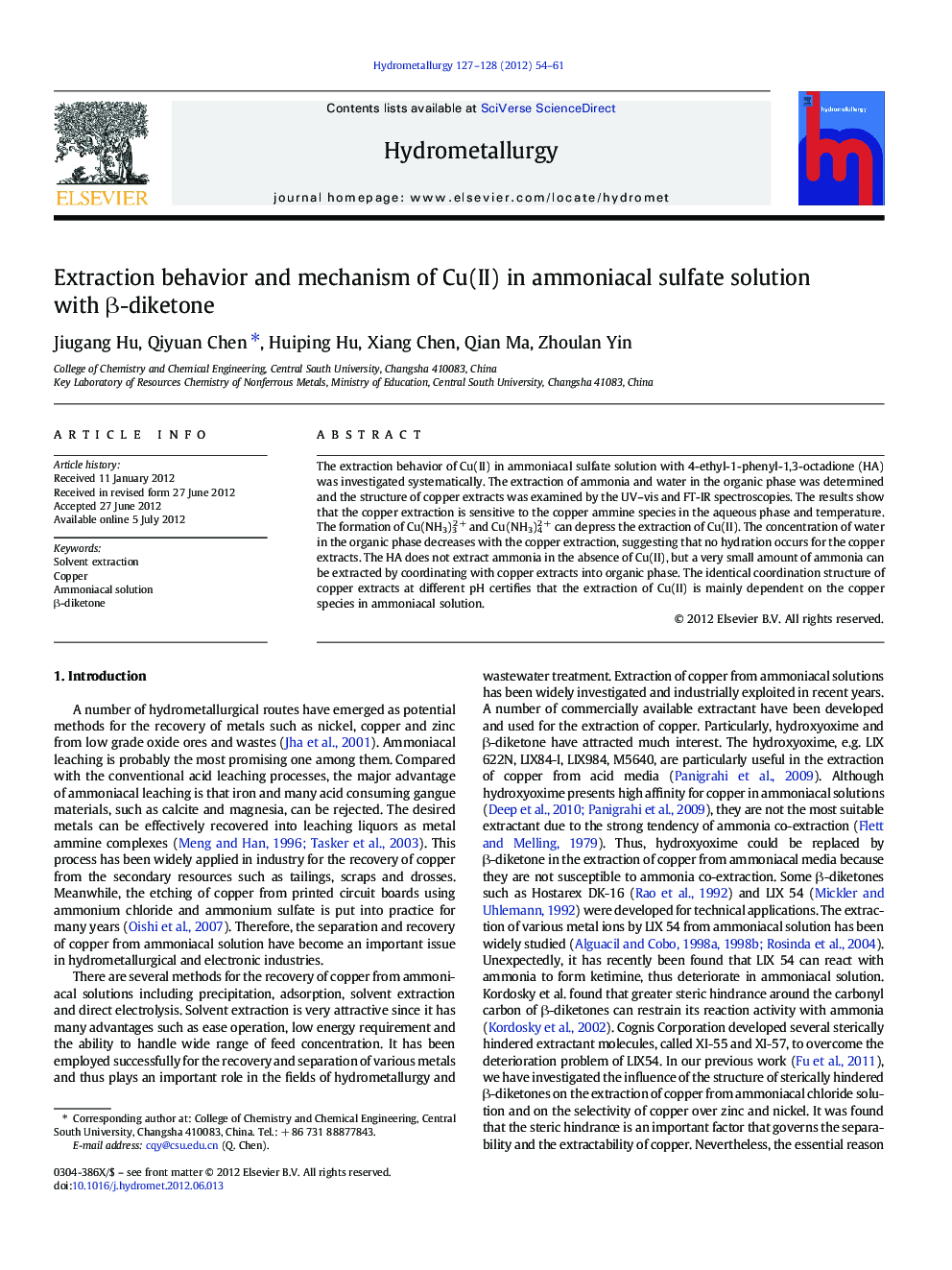| Article ID | Journal | Published Year | Pages | File Type |
|---|---|---|---|---|
| 212503 | Hydrometallurgy | 2012 | 8 Pages |
The extraction behavior of Cu(II) in ammoniacal sulfate solution with 4-ethyl-1-phenyl-1,3-octadione (HA) was investigated systematically. The extraction of ammonia and water in the organic phase was determined and the structure of copper extracts was examined by the UV–vis and FT-IR spectroscopies. The results show that the copper extraction is sensitive to the copper ammine species in the aqueous phase and temperature. The formation of Cu(NH3)32 + and Cu(NH3)42 + can depress the extraction of Cu(II). The concentration of water in the organic phase decreases with the copper extraction, suggesting that no hydration occurs for the copper extracts. The HA does not extract ammonia in the absence of Cu(II), but a very small amount of ammonia can be extracted by coordinating with copper extracts into organic phase. The identical coordination structure of copper extracts at different pH certifies that the extraction of Cu(II) is mainly dependent on the copper species in ammoniacal solution.
► Copper extraction is sensitive to the property of ammoniacal solution. ► The formation of copper ammine species restrains copper extraction. ► Ammonia can be extracted by coordinating with copper extracts into organic phase. ► No hydration was observed in the extracted copper complexes. ► The structure of copper extracts should be the form of square planar configuration.
